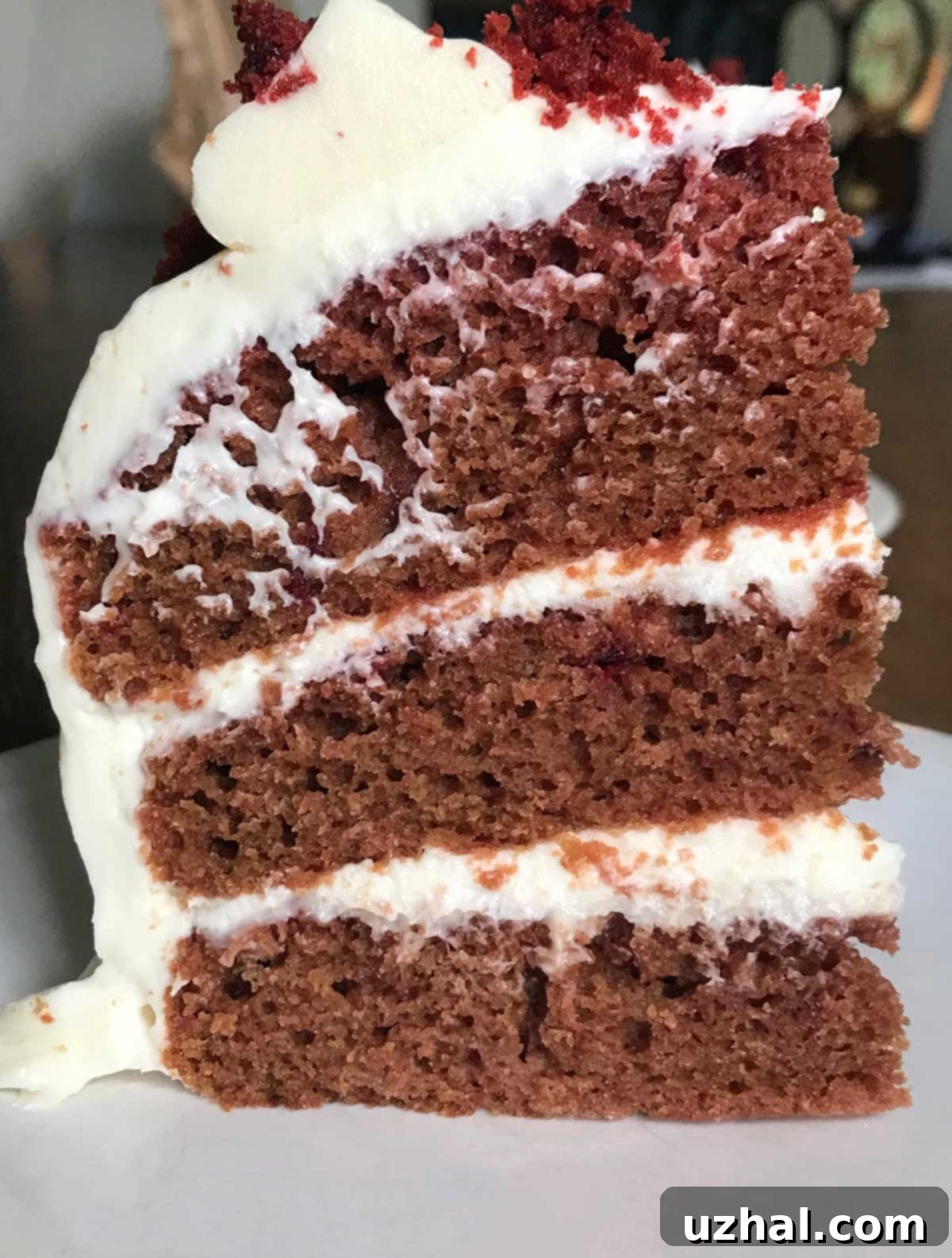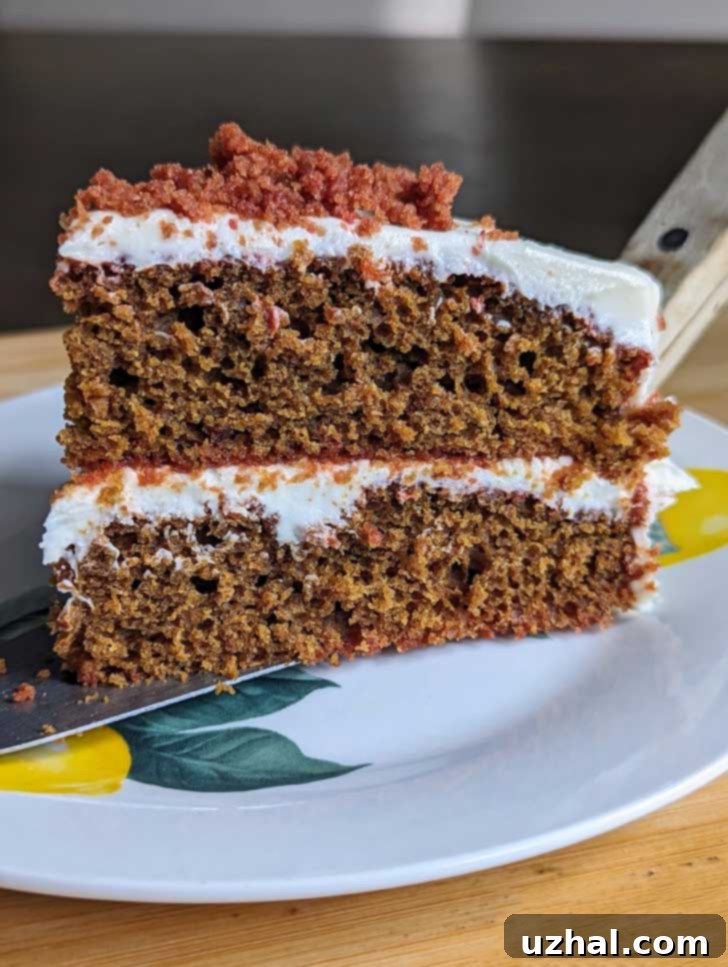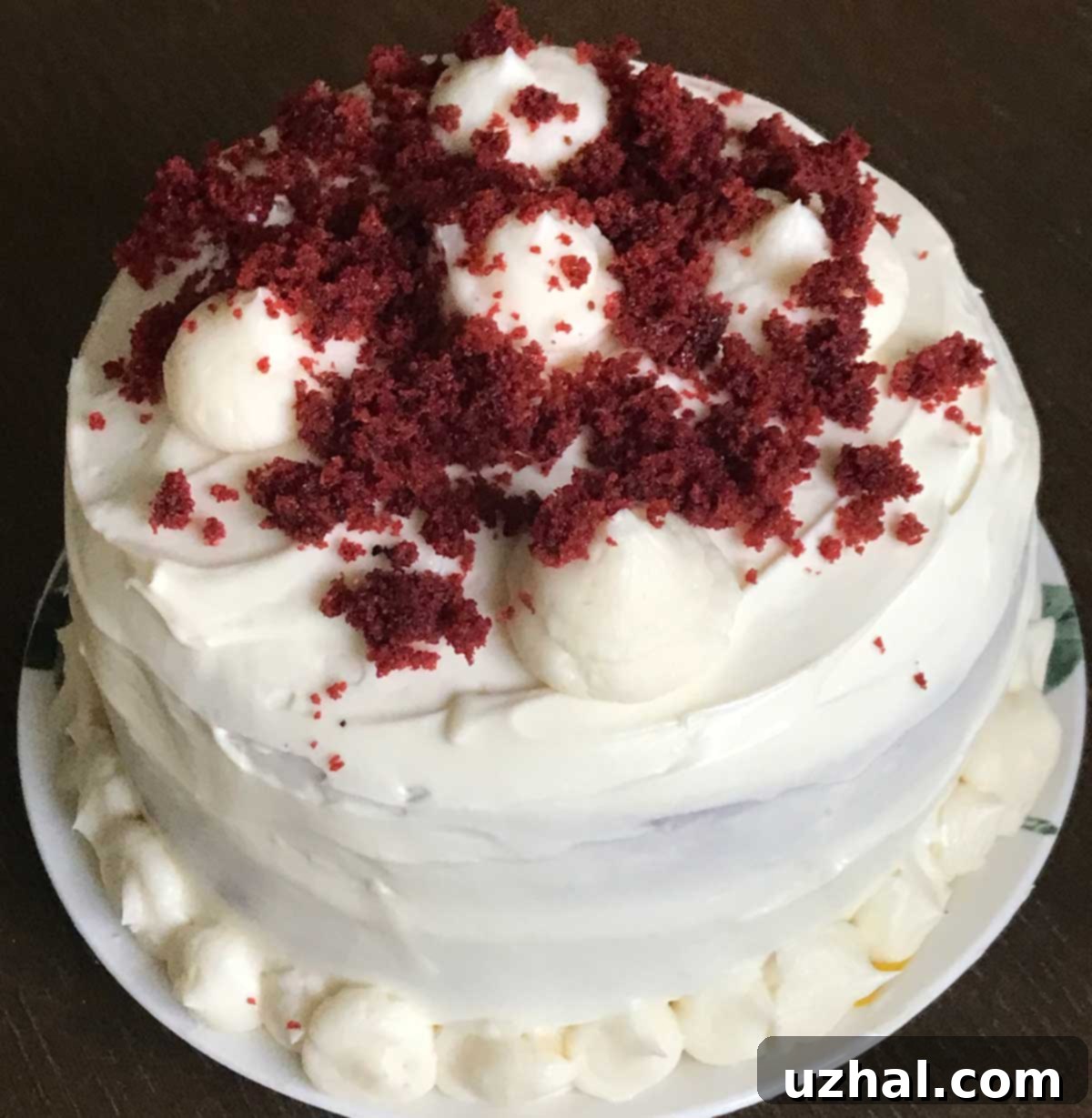Delicious Fresh Beet Cake: A Naturally Vibrant and Moist Dessert with Tangy Cream Cheese Frosting
For many, the idea of a “beet cake” might conjure images of an unusual, earthy dessert, perhaps a quirky substitute for the beloved Red Velvet. However, my journey to truly appreciating fresh beet cake only began when I embraced two fundamental truths. Firstly, this exceptional dessert stands proudly on its own, distinct from Red Velvet cake. It doesn’t need to mimic or replace it; it offers a unique culinary experience. Secondly, and perhaps most importantly, a fresh beet cake *should* taste like beets, and that’s not just acceptable – it’s wonderful!
If your baking background, like mine, includes a deep affection for traditional Red Velvet Cake, rich with red dye, buttermilk, vinegar, and cocoa, then approaching a beet cake requires an open mind. Forget your preconceptions and be ready to discover a dessert that boasts a beautiful, natural hue and a complex flavor profile all its own. This isn’t just a cake; it’s an adventure in natural baking.
Jump to Recipe

My past experiences with beet cakes were, admittedly, less than stellar. Years ago, I attempted a red beet cake that yielded a disappointing pinkish-purple color and a barely-there flavor. It simply didn’t live up to the promise of a truly vibrant, flavorful cake. Later, I tried another recipe that was delicious in its own right, but it tasted overwhelmingly like chocolate cake, not the distinct beet creation I was hoping for. While a chocolate cake is never a bad thing, I was craving that natural red hue and the earthy-sweetness of beets.
It wasn’t until I stumbled upon and adapted this particular recipe, a brilliant spin-off from a Southern Living cupcake creation, that I finally achieved satisfaction. This recipe strikes the perfect balance of color, texture, and flavor, delivering a truly unique and utterly delightful cake. In fact, it was so good, I found myself baking it twice in rapid succession! It has quickly become a cherished favorite, proving that with the right approach, fresh beets can transform into a show-stopping dessert.
Unpacking the Distinct Flavor and Wonderful Texture of Fresh Beet Cake
The flavor profile of this fresh beet cake is a harmonious blend of earthy beets, subtle chocolate notes, the tangy richness of buttermilk, and a crucial punch of fresh lemon. The lemon, in particular, is an absolute game-changer, brightening the overall taste and preventing the beet flavor from becoming too heavy. Interestingly, I’ve noticed that the distinct beet flavor tends to mellow and deepen beautifully by the second day, or perhaps my palate simply adjusts to its delightful uniqueness. Either way, the cake remains incredibly enjoyable.
Beyond its captivating taste, the texture of this beet cake is nothing short of wonderful. This is primarily thanks to the carefully cooked and pureed fresh beets, which act as a natural moistening agent, contributing to an incredibly soft, tender crumb. Unlike some vegetable cakes that can feel dense, this beet cake maintains a delicate lightness. The accompanying cream cheese icing is equally vital to the experience. Its tangy, slightly tart nature perfectly complements the cake’s richness, creating a balanced and irresistible bite. Honestly, I wouldn’t dream of pairing this cake with anything other than a tart cream cheese or a bright lemon-infused icing. Let’s reserve the traditional Ermine frosting for actual Red Velvet cakes.

Preparing Your Fresh Beets: The Key to Cake Success
The preparation of the fresh beets is arguably the most labor-intensive, yet crucial, step in this recipe, and it’s essential for achieving the perfect texture and vibrant color. You can utilize your preferred method for cooking fresh beets. While microwave tutorials exist for quick preparation, I find that boiling them whole (or halved if they are extra-large) is just as straightforward and yields consistently excellent results.
The boiling process typically takes about 30 to 40 minutes, with the exact time depending on the intensity of your simmer and the size of your beets. The beauty of this method is that it requires minimal supervision; you don’t need to constantly babysit or turn them. Once cooked through and tender (easily pierced with a fork), carefully drain the vibrant red water. Allow the beets to cool sufficiently before handling. This cooling period is important because it makes them easier to peel and prevents burns.
After cooling and peeling (gloves are highly recommended here to avoid staining your hands!), the next critical step is to puree them. A food processor or blender will work perfectly for this. Once pureed, it’s vital to strain the puree. This step removes any excess juice, which is crucial for preventing the finished cake from having a dense, steamed, or gummy texture. By meticulously draining the liquid, you ensure a light, moist, and perfectly crumbly cake.

Understanding Beet Weight: From Fresh to Pureed
Accurate measurement is key in baking, especially when working with natural ingredients like fresh beets, where moisture content can vary. I took some detailed measurements during my preparation to give you a clearer idea of what to expect. An initial 8 ounces of fresh, whole beet, after cooking, typically reduces to about 6.2 ounces, indicating a weight loss of approximately 23% from the cooking process alone. Once peeled and allowed to cool further (allowing excess steam to evaporate), the weight hovered around 6 ounces.
After being meticulously pureed, scraped from the food processor, and, most importantly, thoroughly drained of excess liquid through a strainer, the final usable amount of pureed beet was consistently around 5 ounces. This means that if a recipe calls for 1 pound (16 ounces) of fresh beets, you might realistically end up with as little as 10 ounces of cooked, pureed, and drained beets for your cake. For this specific recipe, aiming for precisely 5 ounces of the final pureed beet product is essential for the intended moisture and texture.
To ensure you reach this target of at least 5 ounces of pureed beet, I highly recommend starting with a slightly larger quantity of fresh beets, perhaps 10 ounces instead of just 8 ounces. This provides a buffer, accounting for variations in beet size, moisture content, and peeling waste. It’s better to have a little extra than to fall short. Of course, this raises an interesting question: would a slightly greater or lesser amount of beets fundamentally change the cake? Perhaps a bit more beet could intensify the flavor and color, or a bit less might make it milder. Experimentation is always part of the baking fun!

While I may have dwelled a bit on the details of cooking and weighing beets, it truly is the most involved part of this recipe. Once you have your perfectly pureed beets ready, the rest of the baking process is incredibly smooth sailing, leading directly to a delightful and rewarding outcome!
Choosing Your Pan: Adapting for Different Cake Presentations
This fresh beet cake recipe was originally adapted from a cupcake recipe, which was double the current amount. This means the recipe is highly versatile and can easily be doubled if you’re looking to make a larger cake to serve more guests or simply to have more leftovers (always a good idea!).
For my personal preference, a six-inch, three-layer cake proved to be absolutely perfect. The multiple layers offer a beautiful presentation and a delightful cake-to-frosting ratio in every bite. I also experimented by baking it as two 8-inch layers. These layers were noticeably thinner but baked up beautifully, resulting in a slightly different but equally enjoyable experience. You could also opt for a single 8-inch or 9-inch square layer, which offers simplicity.
However, I’ve found that a thicker, single-layer cake might lose some of its charm with this particular recipe. The generous amount of cream cheese icing is a significant component of what makes this cake so incredibly good, and multiple layers allow for more of that luscious frosting. If you’re a true beet enthusiast and prefer cakes that are less sweet, a single thick layer might appeal to you more, emphasizing the cake’s rich, earthy flavor. Should you decide to go with a one-layer cake, remember to halve the icing recipe accordingly.
An interesting baking mystery arose during one of my recent batches: my second cake emerged from the oven significantly less red, almost orange, despite the batter being a vibrant red! The only changes I made were adding lemon zest to the batter and changing the shape of the pan. This unexpected color shift suggests that factors like acidity (from the lemon zest) and possibly even the baking environment (how heat distributes in different pan shapes) can influence the final color of naturally colored cakes. It looks like I’ll have to bake it again to truly solve this captivating color puzzle!

The Perfect Companion: Tangy Cream Cheese Icing
No fresh beet cake would be complete without the perfect frosting, and for this recipe, a tangy cream cheese icing is absolutely essential. This particular icing is intentionally not overly sweet, allowing the nuanced flavors of the beet cake to shine through while providing a delightful contrast. The subtle hint of lemon in the icing further ties into the cake’s flavor profile, creating a cohesive and refreshing taste experience.
Due to its high cream cheese content, this icing is best kept refrigerated until just before serving. This ensures it maintains its beautiful structure and prevents it from becoming too soft, especially in warmer environments. A little tip: while regular cream cheese works wonderfully, I once purchased Neufchatel cheese on sale and decided to try it in the icing. I was pleasantly surprised by how beautifully it performed, yielding an equally delicious and slightly lighter frosting. Feel free to use either, depending on your preference and what’s available.
A Deeper Look at the Essential Ingredients
Crafting the perfect fresh beet cake relies on understanding the role of each ingredient. Here’s a more detailed breakdown of what you’ll need and why:
- Fresh Beets: While the appeal of canned beets for convenience is understandable, I haven’t tested this recipe with them because fresh beets yield such superior results in terms of flavor, vibrant color, and moisture. Even with canned, you’d still need to puree them, so the minimal extra effort for fresh is truly worth it for an outstanding cake. They are the star, providing natural sweetness, moisture, and that stunning hue.
- Fresh Lemon Juice (and Zest): This is the secret weapon! Fresh lemon juice brightens the earthy beet flavor, balancing it beautifully. Nellie & Joe’s is a great bottled option in a pinch, but fresh squeezed is always preferred. Lemon zest adds an aromatic lift that enhances the overall freshness of the cake.
- All-Purpose Flour: Whether bleached or unbleached, all-purpose flour provides the necessary structure. Bleached flour *might* contribute to a slightly redder hue in the final cake due to its lower protein content and finer grind, which can affect crumb texture and light reflection.
- Natural Unsweetened Cocoa Powder: Crucial for the subtle chocolate notes that complement the beets, and importantly, for interacting with the baking soda to create lift. Use natural cocoa (like Navitas, as mentioned) rather than Dutch-processed cocoa, as the latter has a different pH and requires baking powder for leavening.
- Baking Powder & Baking Soda: These leavening agents work in harmony to give the cake its light and airy structure. Baking soda reacts with the acidic components (buttermilk, natural cocoa, lemon), while baking powder provides additional lift.
- Salt: A fundamental ingredient that enhances all other flavors, bringing balance and depth to both the cake and the frosting. Morton kosher salt, which measures similarly to table salt, is a good choice.
- Large Eggs: Eggs contribute to the cake’s structure, richness, and emulsification, helping to bind the ingredients together and provide lift.
- Neutral Oil (Wesson Pure Vegetable): A neutral-flavored oil is key to letting the beet and lemon flavors shine without imparting any unwanted tastes. I prefer Wesson Pure Vegetable oil as it has a clean flavor and seems to stay fresh longer than some other neutral oils like canola, which can sometimes develop an off-flavor quickly.
- Vanilla Extract (Kirkland or your favorite): A classic flavor enhancer, vanilla adds warmth and depth to both the cake and the cream cheese frosting.
- Buttermilk: The acidity in buttermilk reacts with the baking soda, contributing to the cake’s rise and tender texture. It also adds a subtle tanginess that complements the other flavors. Lately, I’ve been enjoying Bob’s Red Mill powdered buttermilk mixed with water for convenience.
- Cream Cheese (Neufchatel works too): The foundation of our tangy frosting. Use full-fat cream cheese for the best texture and flavor, or Neufchatel for a slightly lighter option that still delivers.
- Unsalted Butter: Essential for a rich, smooth, and delicious cream cheese frosting. Unsalted butter allows you to control the overall salt content of your frosting.
- Powdered Sugar: Provides sweetness and the smooth, creamy texture necessary for a luscious frosting.
- Additional Vanilla and Lemon Juice for Frosting: These additions ensure the frosting is as flavorful and balanced as the cake itself, perfectly echoing the key notes of the dessert.
Recipe: Fresh Beet Cake with Cream Cheese Frosting

Fresh Beet Cake
Pin Recipe
Ingredients
- 8-10 ounces fresh whole beets (one large or two medium)
- 5 teaspoons fresh lemon juice
- ¾ teaspoon lemon zest (optional)
- 1 ¼ cups all-purpose flour (160 grams)
- 1 ¼ cups granulated sugar, scant (235 grams)
- 1 ½ tablespoons unsweetened cocoa, natural type not Dutch process
- 1 teaspoon baking powder
- ¼ teaspoon baking soda
- ½ teaspoon salt
- 2 large eggs
- 6 tablespoons neutral oil such as Wesson**
- ½ teaspoon vanilla extract
- 6 tablespoons buttermilk
Cream Cheese Frosting
- 12 oz cream cheese, softened (Neufchatel works too) (336 grams)
- 3 oz unsalted butter, softenend (84 grams)
- 2 cups powdered sugar (8 oz/225 grams)
- 1 teaspoon vanilla extract
- 1 teaspoon lemon juice
Instructions
-
Prepare the Beets: Cook the beets ahead of time. Cut the beets in half (if large), boil until tender (about 30-40 minutes), then let cool completely and peel. Puree the cooked beets until smooth, then put the puree through a fine-mesh strainer and press out as much excess juice as you can. You may have more, but for the cake, you’ll need exactly 5 oz (140 grams) of cooked, pureed, and drained beets. Stir the fresh lemon juice and zest (if using) into the pureed beets. Set aside.
-
Preheat Oven & Prep Pans: Preheat your oven to 350 degrees F (175 C). Generously grease and flour three 6-inch round cake pans or two 8-inch round pans.
-
Combine Dry Ingredients: In a medium bowl, whisk together the all-purpose flour, granulated sugar, unsweetened cocoa, baking powder, baking soda, and salt. Set this dry mixture aside.
-
Combine Wet Ingredients: In the bowl of a stand mixer fitted with the whisk or paddle attachment, begin beating the large eggs. Gradually drizzle in the neutral oil and continue beating until the mixture is thick and light lemon-colored (this usually takes about a minute). Reduce the mixer speed to low, then beat in the pureed beets, vanilla extract, and buttermilk until just combined.
-
Mix Batter: Add the reserved flour mixture to the wet ingredients. Stir by hand with a spatula until most of the flour is incorporated, then beat on low speed for about one minute, or until the batter is smooth and evenly blended with no dry spots. Be careful not to overmix.
-
Bake the Cakes: Divide the batter evenly between the three greased and floured 6-inch cake pans (each pan will hold a little over 9 oz of batter). Bake in the preheated oven at 350 degrees F for about 22-25 minutes. The cakes should puff up slightly and a wooden skewer inserted into the center should come out clean. If using two 8-inch pans, start checking for doneness around 20 minutes.
-
Cool Cakes: Let the baked cakes cool in their pans for 10 minutes. This allows them to set slightly before you handle them. After 10 minutes, carefully loosen the edges with a knife and invert the cakes onto a wire cooling rack to cool completely.
-
Prepare Frosting: While the cakes are cooling, prepare the cream cheese frosting. In the bowl of a stand mixer fitted with the whisk or paddle attachment, beat the softened cream cheese and softened unsalted butter until smooth and creamy. Gradually add the powdered sugar, beating on low speed until blended. Increase speed to medium-high and beat until light and fluffy, scraping down the bowl often. Finally, beat in the vanilla extract and lemon juice until fully incorporated and smooth.
-
Assemble & Serve: Once the cake layers are completely cool, frost your cake as desired. Keep the finished fresh beet cake refrigerated until you are ready to serve to maintain the frosting’s integrity.
Notes
Discover More Delicious Recipes
- Chocolate Beet Cake: Explore another take on baking with beets, focusing on rich chocolate flavor.
- Beet Brownies: A creative way to incorporate vegetables into a fudgy, decadent treat.
- Scratch Strawberry Cake: For those who love fruity, vibrant layer cakes with delicious cream cheese icing.
- Red Velvet White Chip Cookies: If you still have a craving for the traditional Red Velvet flavor, but in cookie form!
In conclusion, this fresh beet cake is more than just a recipe; it’s a testament to the delightful possibilities of baking with natural ingredients. It’s a cake that commands attention with its vibrant, natural color and captivates with its unique, balanced flavor and incredibly moist texture. We encourage you to cast aside any hesitations, embrace the beet, and embark on this delicious baking journey. The result is a truly memorable dessert that will impress both your palate and your guests.
